If you’ve ever dreamed of harvesting creamy, buttery Hass avocados straight from your backyard, you’re not alone. The Hass variety is by far the world’s favorite avocado — rich, flavorful, and perfect for everything from guacamole to avocado toast. The good news? With the right care, patience, and a few simple steps, you can grow your own Hass avocado tree and enjoy years of delicious fruit.
In this comprehensive guide, we’ll walk through how to grow Hass avocados — from planting to pruning, watering to harvesting — so you can have a lush, productive tree that thrives season after season.
What Makes Hass Avocados So Special?
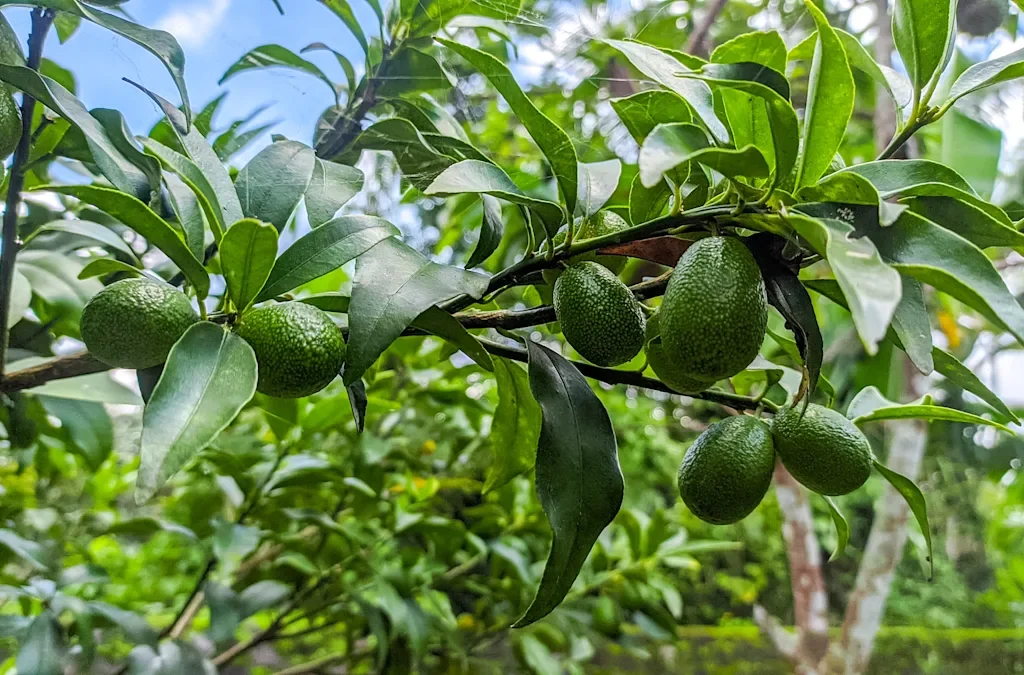
The Hass avocado (Persea americana) is a hybrid variety first discovered in California in the 1920s. It’s loved globally for its rich flavor, creamy texture, and long shelf life. Unlike smooth-skinned varieties such as Fuerte or Bacon, Hass avocados have thick, pebbly, dark-green-to-black skin when ripe.
Here are a few reasons gardeners adore Hass avocados:
- Flavor: Buttery and nutty with a hint of sweetness — perfect for any dish.
- Texture: Creamy and dense with higher oil content than most varieties.
- Productivity: Mature trees can produce hundreds of fruits per year.
- Longevity: Once established, a Hass avocado tree can produce fruit for decades with minimal upkeep.
Whether you’re growing it in the ground or in a large container, a Hass avocado can become a showstopper in your home garden.
Step 1: Choosing the Right Growing Method
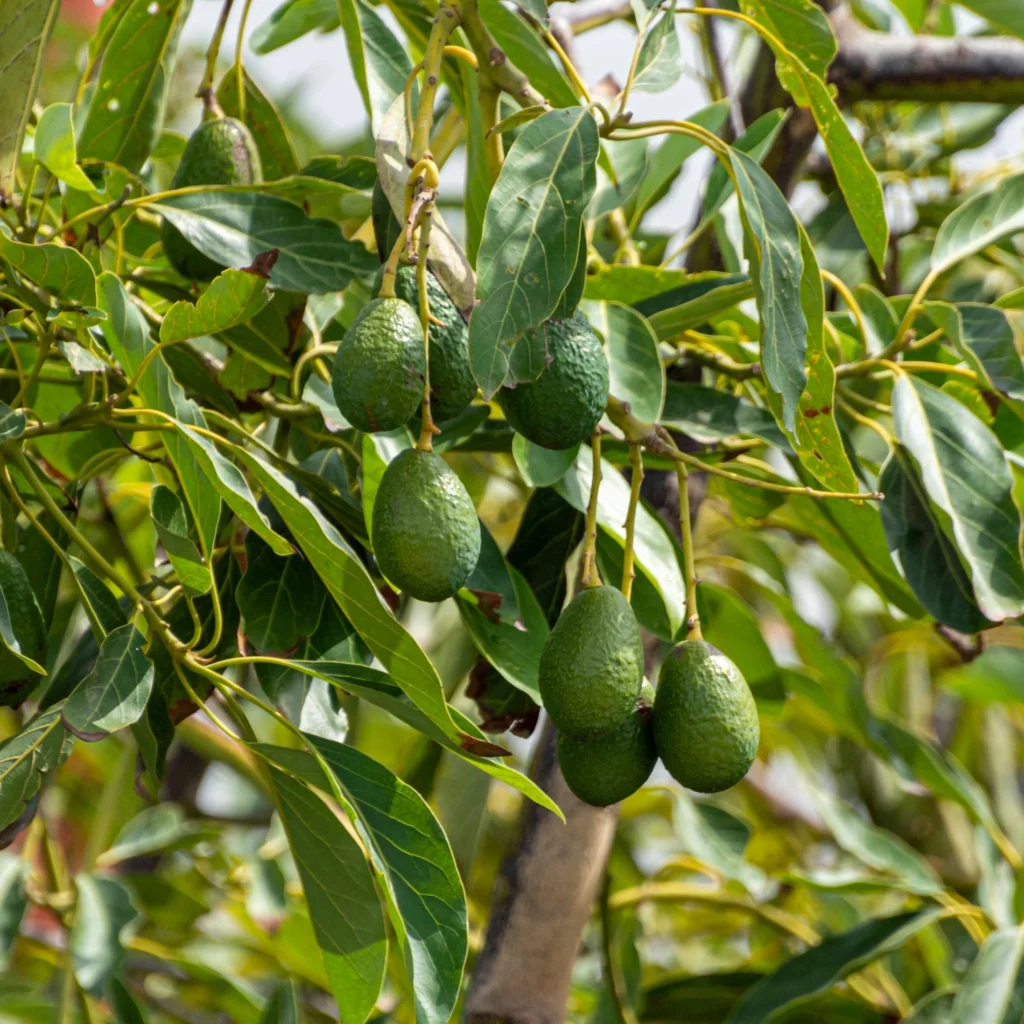
You can start your Hass avocado in two ways — from seed or from a grafted tree.
1. Growing from Seed
Starting from seed is fun and educational, but it requires patience. Hass avocados grown from seed often take 7–10 years (or more) to bear fruit, and the fruit may not be identical to the parent tree.
To sprout a seed:
- Remove the pit from a ripe Hass avocado and wash it clean.
- Insert 3–4 toothpicks into the sides and suspend it over a jar of water with the bottom half submerged.
- Place the jar in a warm, bright area but out of direct sunlight.
- In 3–6 weeks, you’ll see roots and a stem sprouting.
- When the stem is about 6 inches tall, cut it back to about 3 inches to encourage stronger growth.
- Once the seedling has a good root system, transplant it into a pot with rich, well-draining soil.
2. Buying a Grafted Tree
If you want fruit faster (within 3–5 years), buy a grafted Hass avocado tree from a nursery. These are trees grown on hardy rootstock with a branch from a mature fruiting tree grafted on top.
Grafted trees are preferred because:
- They produce consistent, high-quality fruit.
- They’re more disease-resistant.
- They mature and bear fruit much earlier.
Step 2: Selecting the Perfect Planting Site
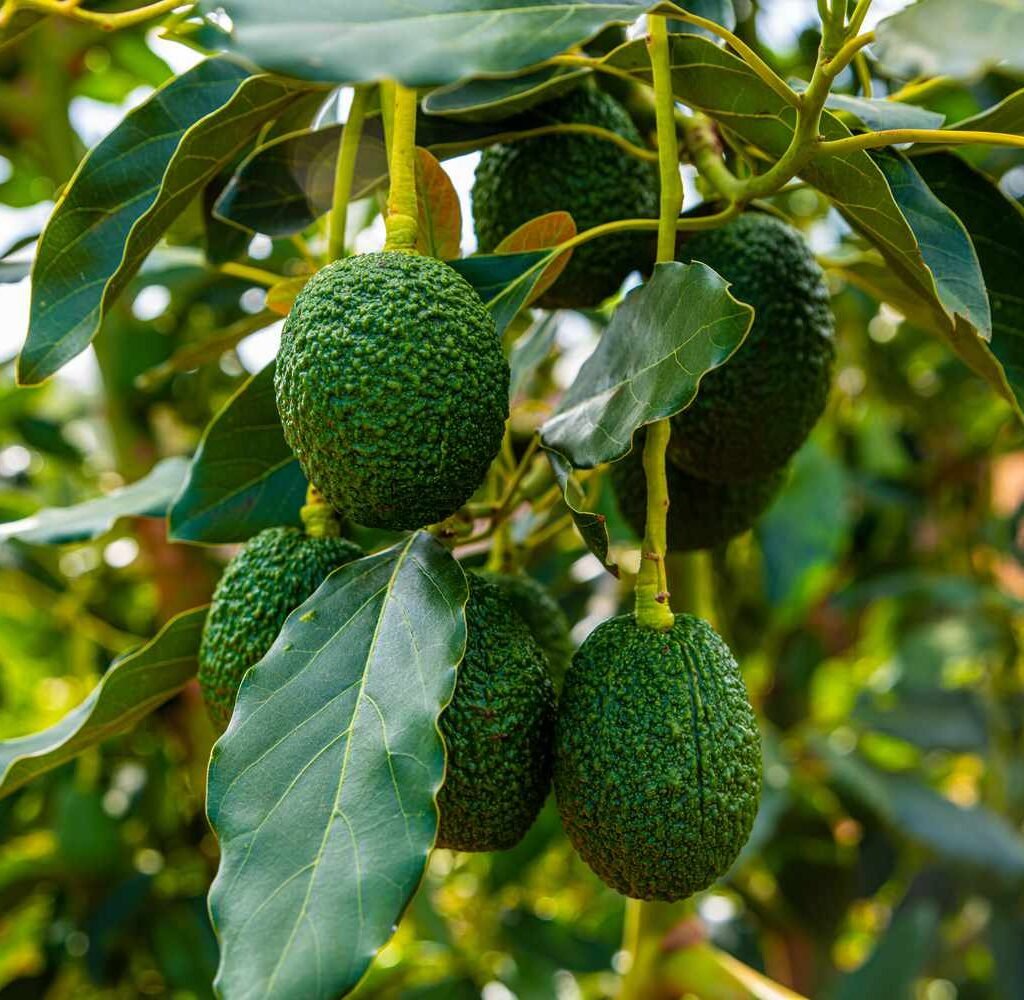
Avocado trees love warmth and sunshine. For the best growth:
- Sunlight: Choose a spot that gets at least 6–8 hours of full sun daily.
- Soil: Well-draining soil is crucial — sandy loam is ideal. Avoid heavy clay that traps water.
- Drainage: Poor drainage leads to root rot, the most common avocado killer. If your soil drains slowly, build a raised bed or mound 2–3 feet high.
- Space: Give your tree room to grow. Mature Hass avocado trees can reach 25–35 feet tall and wide if unpruned.
If you’re growing in a container, choose one that’s at least 20–25 gallons with drainage holes. Use a potting mix formulated for citrus or succulents.
Step 3: Planting Your Hass Avocado Tree
Planting in the Ground
- Dig a hole twice as wide and slightly deeper than the root ball.
- Gently remove the tree from its container and place it in the hole so the top of the root ball sits slightly above soil level.
- Backfill with native soil mixed with compost and perlite for drainage.
- Water thoroughly right after planting.
- Apply a 3–4 inch mulch layer around the base (keep it a few inches from the trunk).
Planting in a Container
- Fill your pot halfway with loose, well-draining mix (cactus soil + compost works well).
- Place the tree in the center, add more soil, and gently press it down.
- Water until moisture runs out the drainage holes.
- Place the pot in a sunny, sheltered location.
Step 4: Watering and Feeding
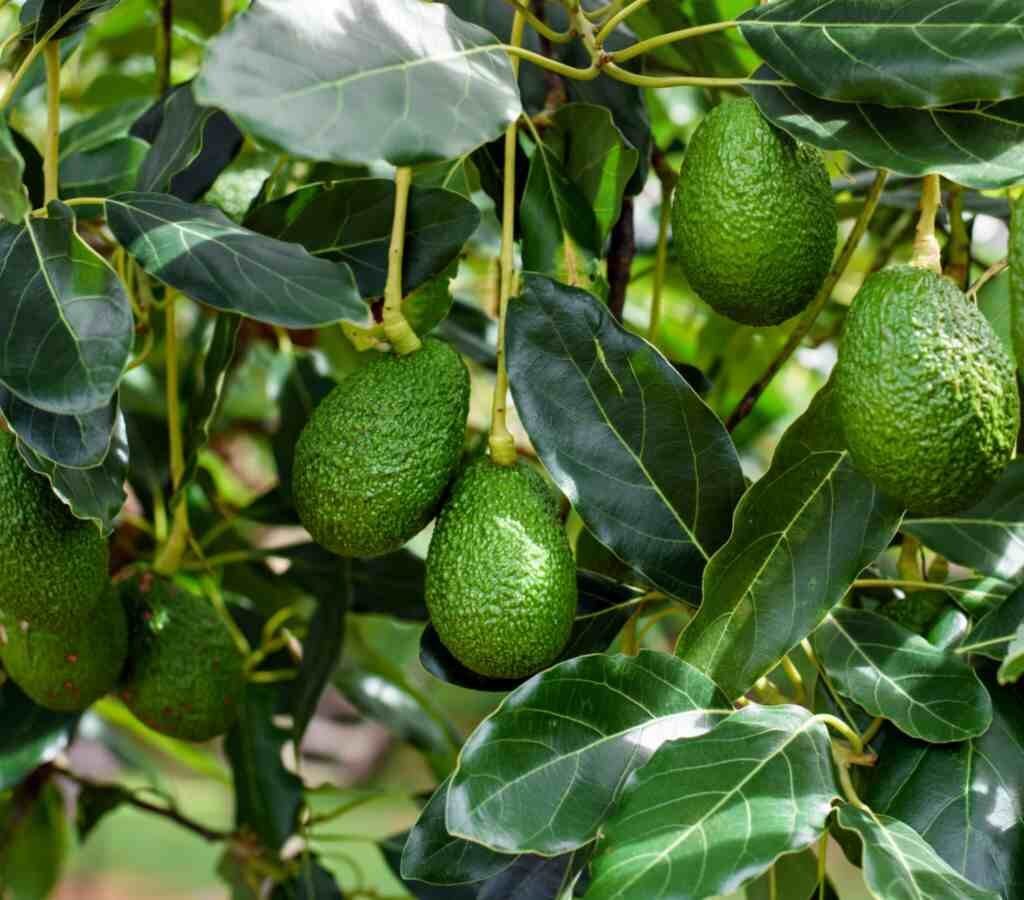
Watering
Hass avocados love consistent moisture but hate waterlogged roots.
- First year: Water 2–3 times per week, depending on temperature and rainfall.
- After establishment: Deeply water once a week in warm weather.
- Tip: Let the top 2 inches of soil dry before watering again.
A moisture meter can help prevent overwatering — a common issue with young trees.
Fertilizing
Hass avocado trees are moderate feeders. They need nitrogen and trace elements like zinc, iron, and magnesium.
Use a balanced citrus or avocado fertilizer. Feed:
- Young trees: Every 6–8 weeks during spring and summer.
- Mature trees: 3 times a year — spring, midsummer, and early fall.
Avoid fertilizing during winter when growth slows.
Step 5: Pruning for Health and Shape
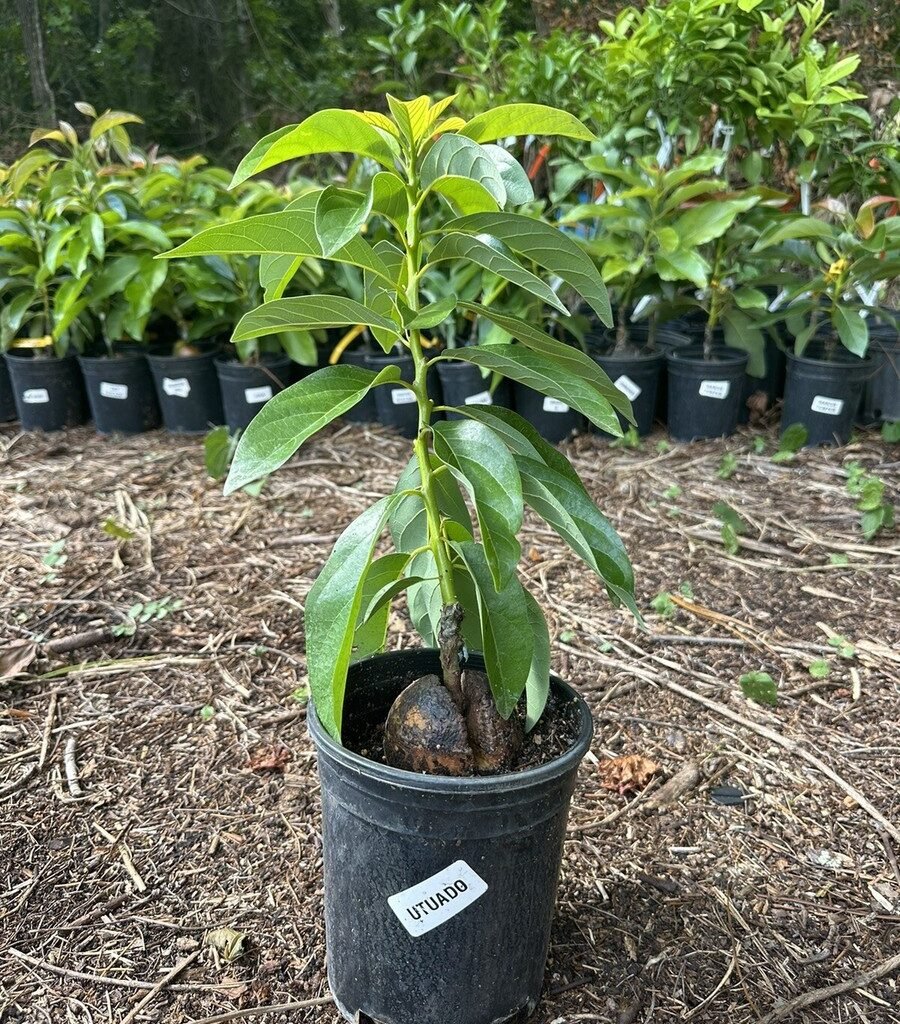
Avocado trees naturally have a rounded canopy, but light pruning encourages airflow and manageable growth.
- First few years: Pinch back growing tips to promote branching.
- Established trees: Prune in late winter or early spring before new growth starts.
- Remove dead or crossing branches.
- Avoid heavy pruning — it can reduce fruit production.
For container-grown trees, regular pruning helps maintain a compact size while still producing fruit.
Step 6: Pollination Tips
Hass avocados are Type A flowering trees. Their blossoms open as female one day and male the next. While a single tree can self-pollinate, you’ll get a heavier yield if you have a Type B variety (like Bacon or Fuerte) nearby for cross-pollination.
To attract pollinators:
- Grow flowers like lavender, alyssum, or marigold nearby.
- Avoid pesticide sprays during bloom season.
Step 7: Protecting from Pests and Diseases
Common avocado pests and problems include:
- Root rot (Phytophthora): Prevent by ensuring excellent drainage and avoiding overwatering.
- Spider mites and thrips: Use neem oil or insecticidal soap as needed.
- Sunburn: Young trees may need shade cloth in extremely hot climates.
- Frost damage: Protect with frost blankets or bring container plants indoors if temperatures drop below 30°F (-1°C).
Healthy, well-watered trees are naturally more resistant to pests and diseases.
Step 8: Harvesting Hass Avocados
Patience is key with avocados — they don’t ripen on the tree!
- Harvest time: Hass avocados typically mature 8–18 months after flowering, depending on climate.
- The fruit stays hard on the tree. Pick one and let it ripen indoors at room temperature for 7–10 days.
- If it softens evenly, your crop is ready.
- Store ripe avocados in the refrigerator for up to 2 weeks.
Mature trees can yield 200–300 fruits annually, making them a long-term investment for any gardener.
Step 9: Growing Hass Avocados in Containers (Urban Gardener’s Guide)
If you don’t have a yard, you can still grow a thriving Hass avocado in a pot.
Here’s how to keep it healthy:
- Choose a dwarf grafted variety or prune regularly.
- Rotate the pot monthly for even sun exposure.
- Move indoors or under cover during winter.
- Repot every 2–3 years to refresh the soil and encourage new growth.
Container trees usually stay under 8–10 feet, making them perfect for patios, balconies, or greenhouses.
Bonus Tips for Success
- Mulching magic: Use wood chips or straw to retain soil moisture and protect roots.
- Temperature range: Avocados prefer 60–85°F (15–29°C). Prolonged frost can damage flowers and young fruit.
- Companion planting: Avoid planting too close to lawns or heavily fertilized garden beds — they dislike excessive nitrogen.
- Patience pays: A young grafted Hass tree may take 3–5 years to bear fruit, but it’s worth the wait!
Final Thoughts
Growing a Hass avocado tree isn’t just about the fruit — it’s about the experience. Watching your tree flourish, flower, and eventually bear those iconic green-black fruits is one of the most satisfying rewards for any gardener.
With a bit of sunlight, proper drainage, and consistent care, your Hass avocado tree will thrive and supply you with creamy, flavorful fruit year after year. Whether planted in the ground or grown in a large pot on your patio, it’s a rewarding project that connects you to nature and your food in a delicious way.
So why wait? Start planting today and look forward to your first homegrown Hass avocado harvest — straight from tree to toast! .
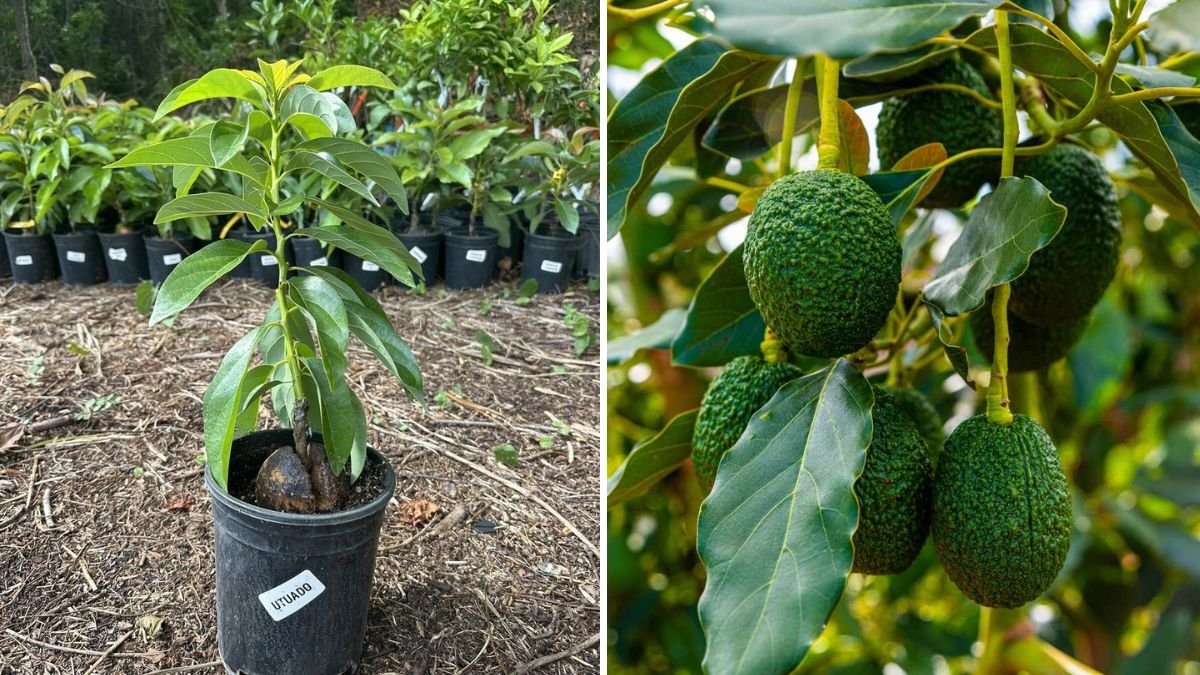
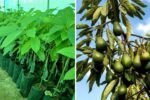
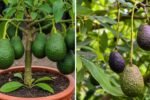

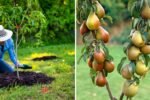
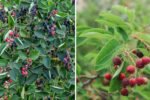
Leave A Comment